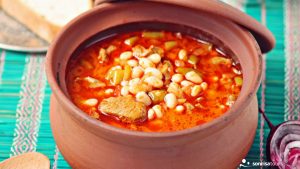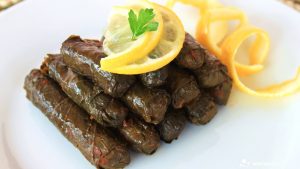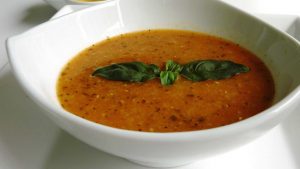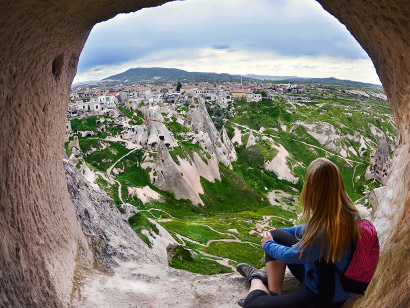“In a part of tour, our guide drive a village in Cappadoccia (around noon). After “cooking classes”; Turkish Coffee served to you.” Bon appetit.
Cappadocia As we all know that Turkish food established in Nomadic period of Turks. Culinary attitudes towards meat, dairy, vegetables and grains that characterized this early period still make up the core of Turkish Cuisine. In addition to that, you will learn how to enrich your meal before serving. Cappadoccia food is the one which makes progress with products in region. Because there are not various farming productsi its affects habit of nourishmentin a negative way. Ingredients used for meals are usually potato, lentil, squash, wheat, chickpea and beans that are produced in the area. It can be molasses of grapes is common for consumption. Another preparation is bread in thin sheet and pickle making. Grapes nad “pezek” are common pickles authentic for the region. On grapes thar are put in cubes, grape juice poured in order to prevent spoiling. Bread making is preperation that is need for help. Women come together and make together and make bread of only one family in a day.
Soup of boiled and pounded wheat (bulgur çorası):
In gredients are fluid of bonesi onionsi tomato paste boiled and pounded wheat, water and salt. Bones are boiled and seperated from water Wheat, onion, tomato paste and salt are added to water. The mixture is cooked in tnadour for an hour and then served.
Soup of dried yogurth (yogurtlu tarhana çorbası):
Ingredients are stratined yogurt, big wheat named as “yarma”, margarine, mint and tomato paste. Strained yogurt and yarma are mixed and cooked until they are boiled. Then special sousage which is prepared on a panis poured on the mixture. It is boiled for 45 minutes. Later, it is served.
Haricot bean in earthen pot (çömlekte kuru fasulye):
Dried bones, haricot bean, oil, tomato paste, onion, salt and water are ingredients. Dried one daybefore, bones are got wet and put in earthen pot to cook. Haricot bean is adde. Onions are cut into slices and put on bean. Water is added and mixture is put in tandour. After it is cooked, sausage with oil and tomato paste is poured. The, it is boiled for half an hour. Later is served.
Leaves stuffed (yaprak sarma):
In Cappdoccia region which is famous for vineculture, the leaves of grapesare kneaded with rice, tomato paste, onion garlic, tomato, pepper, olive oil, salt and other spices. Then they are stuffed with inner materials. They are lined up in a saucepan. Then, lemons are cut into slices and put the to top of leaves. They are st for cooing.
Aside:
Having put in a frying pan, flour is roasted until it is darkened. Then, molasses are it. When it is on suitable degree of added slowly in density. The shape is given to aside which is taken to a plate with a spoon. Cooked butter is put on it. It can be served with walnut if it is desired.
Languages :
• English
• Spanish
CLASE DE COCINA EN CAPPADOCIA
La comida turca se estableció en el período nómada de los turcos. Las actitudes culinarias hacia la carne, los productos lácteos, las verduras y los granos que caracterizaron este período temprano aún constituyen el núcleo de la cocina turca. Además de eso, aprenderá cómo enriquecer su comida antes de servirla. La comida de cappadoccia utiliza productos en la región. Los ingredientes utilizados para las comidas son generalmente papa, lenteja, calabaza, trigo, garbanzo y frijoles que se producen en el área. Puede ser melaza de uvas es común para el consumo. Otra preparación es el pan en lámina fina y la elaboración de pepinillos.
SOPA DE TRIGO (BULGUR ÇORASI):
Sus ingredientes son: caldo de huesos, cebollas, pasta de tomate, trigo hervido y molido, agua y sal. Los huesos se hierven y se separan del agua. Se agregan al agua trigo, cebolla, pasta de tomate y sal. La mezcla se cocina en una olla durante una hora y luego se sirve.
SOPA DE FRİJOLES EN OLLA DE BARRO (ÇÖMLEKTE KURU FASULYE):
Sus ingredientes son: huesos secos, judías, aceite, pasta de tomate, cebolla, sal y agua. Secado un día antes, los huesos se mojan y se ponen en una olla de barro para cocinar, se agregan los frijoles, las cebollas cortadas en rodajas y agua. Una vez cocido, se vierte salchicha con aceite y pasta de tomate, se hierve durante media hora mas y se sirve
HOJAS DE UVA RELLENAS (YAPRAK SARMA):
En la región de Capadocia, famosa por la viticultura, las hojas de uvas se rellenan con arroz, pasta de tomate, cebolla, ajo, tomate, pimiento, aceite de oliva, sal y otras especias. Se alinean en una cacerola. Luego, los limones se cortan en rodajas y se ponen encima de las hojas.
ASIDE:
Después de poner en una sartén, la harina se coce hasta que se oscurece, se agrega melaza de uvay se le agrega mantequilla, se puede servir con nuez si se desea.
IDIOMAS:
- Inglés
- Español








